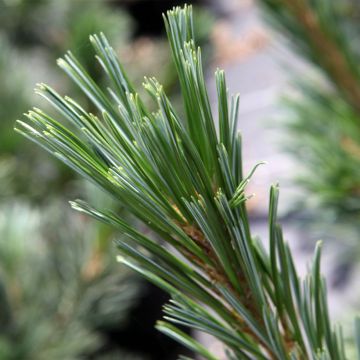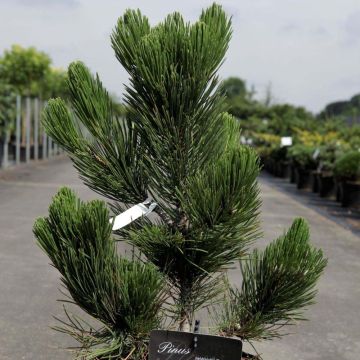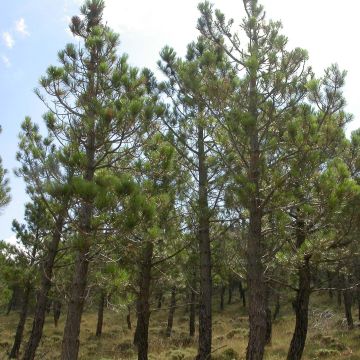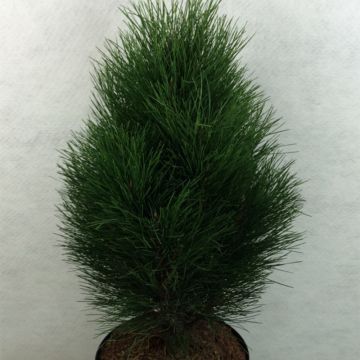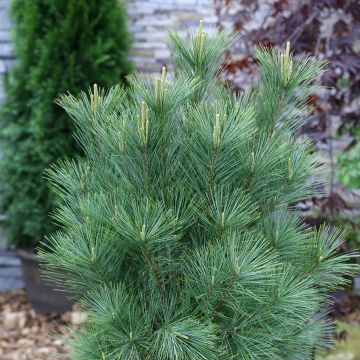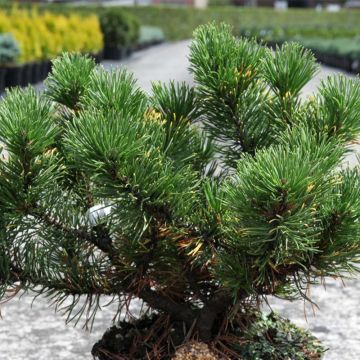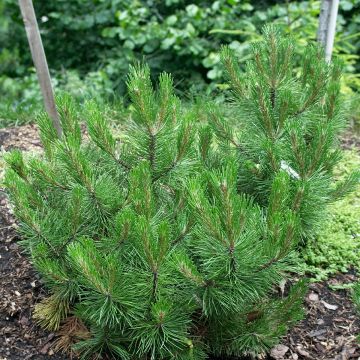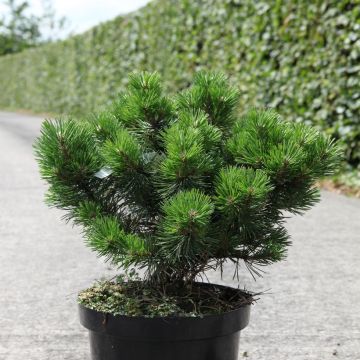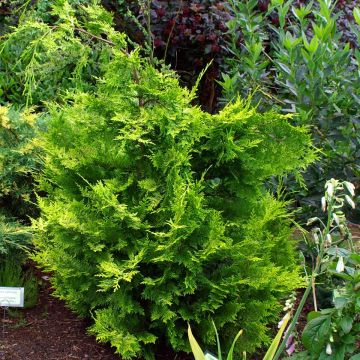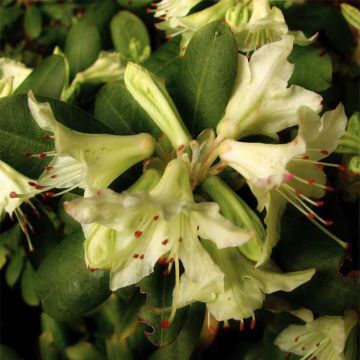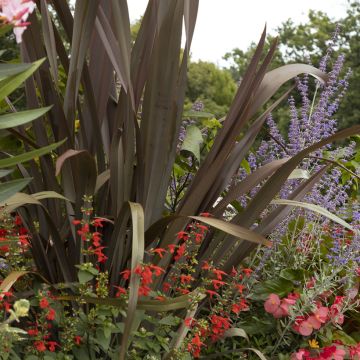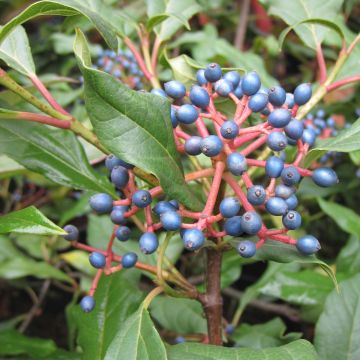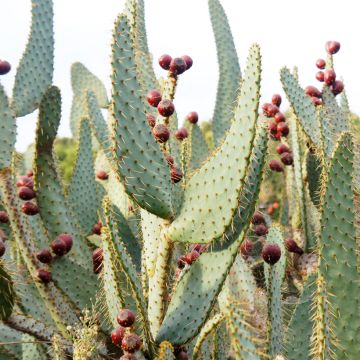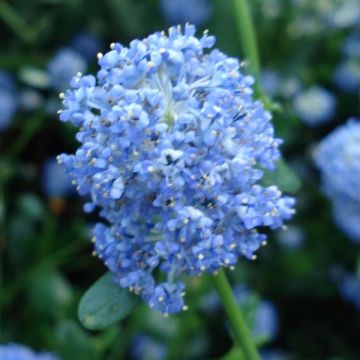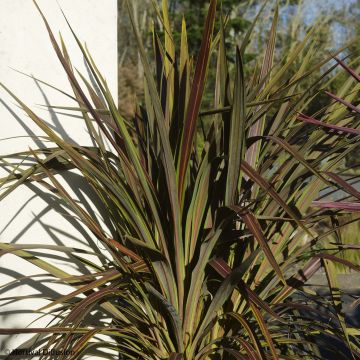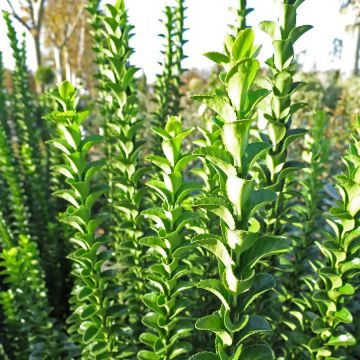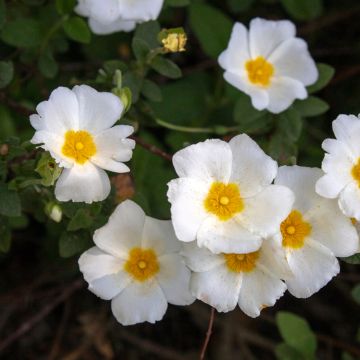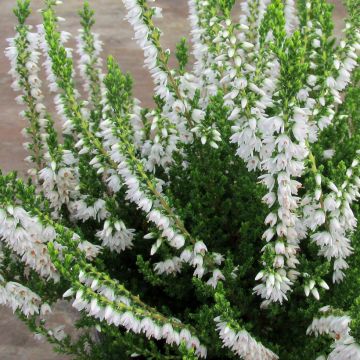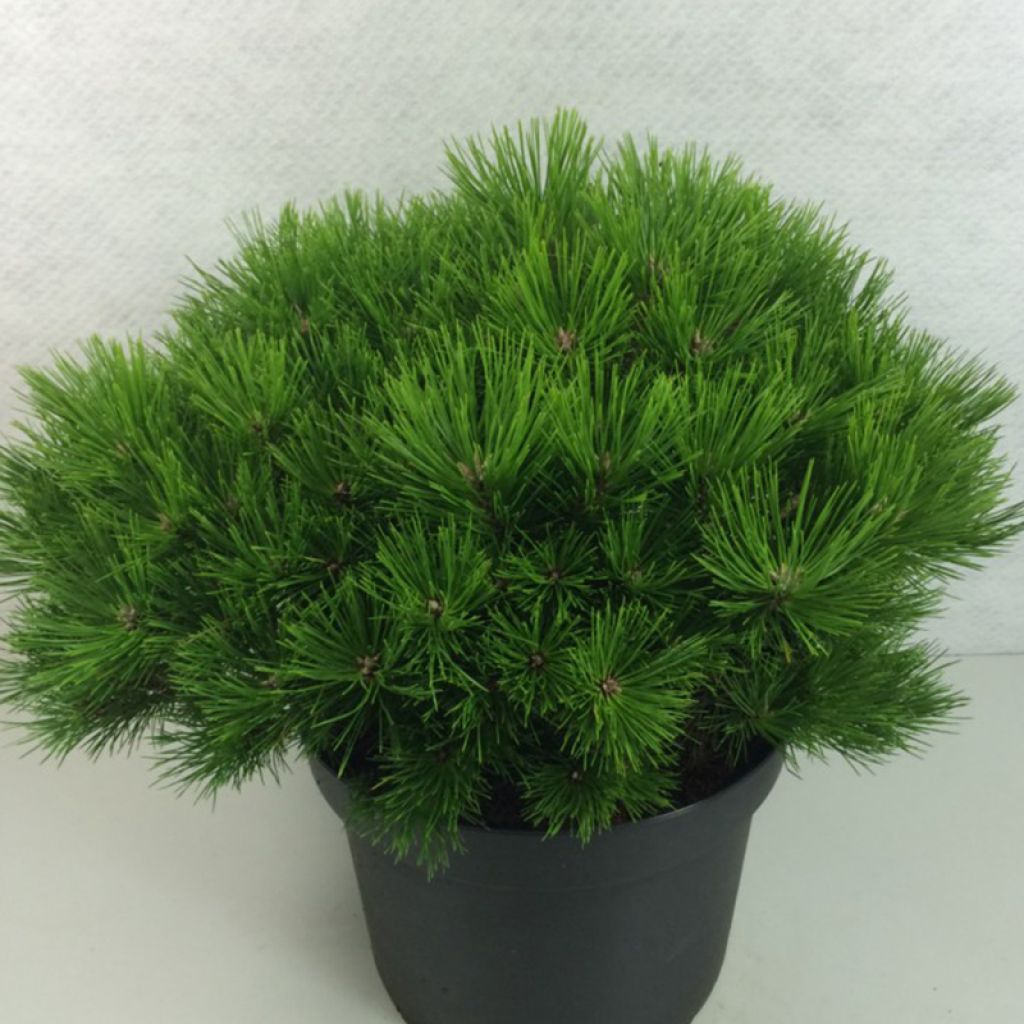

Pinus densiflora Low Glow - Japanese Red Pine
Pinus densiflora Low Glow - Japanese Red Pine
Pinus densiflora Low Glow
Japanese Red Pine, Red Pine
This item cannot be shipped to the selected country
Delivery charge from €5.90
Delivery to Corse prohibited
More information
Schedule delivery date,
and select date in basket
This plant carries a 24 months recovery warranty
More information
We guarantee the quality of our plants for a full growing cycle, and will replace at our expense any plant that fails to recover under normal climatic and planting conditions.
From €5.90 for pickup delivery and €6.90 for home delivery
Express home delivery from €8.90.
Delivery to Corse prohibited: UE law prohibits the import of this plant from mainland France to Corse as part of the fight against Xylella fastidiosa. Please accept our sincere apologies.
More information
Does this plant fit my garden?
Set up your Plantfit profile →
Description
The natural form of this small Japanese red pine, named Pinus densiflora 'Low Glow', suggests a rounded bush, slightly wider than it is tall, with light yellow-green needle-like foliage and such dense vegetation that it fills all the empty spaces in its branches. At the end of the branches, its large pale brown to tan buds emerge from the foliage, announcing the end of summer. Its slow growth and reduced size allow it to fit in small gardens, animate rockeries, and stand out in the foreground on a terrace or balcony. With its horizontal and twisted branches, it is an ideal variety for bonsai art. It enjoys sunlight and well-drained, not too dry, ordinary soil.
Pinus densiflora, also known as Japanese red pine or Japanese parasol pine, is a plant from the Pinaceae family native to forests in northeastern China, Korea, and Japan. In its natural environment, this species can grow over 30 metres (98 feet 5 inches) tall and has a variable habit, naturally coiled form, and often several trunks covered with red bark. Appreciated for its wood in Japan, this species also hosts the cultivation of matsutake, a highly aromatic mushroom, under its foliage.
The 'Low Glow' variety is a very popular variety that stands out from the wild species with its reduced size and naturally dense bushy habit which can be further accentuated by pruning in May-June. Its growth is slow, about 8 to 13cm (3.1 to 5.1in) per year, so after many years, it will reach a height of about 80cm (31.5in) with a spread of 1.10m (3ft 7in). Its often twisted trunk bears almost horizontal branches, from which orange bark branches originate, which become grey and peel off in plates with age. They are covered with fine needles, 10cm (3.9 in) long, grouped in pairs and arranged in wide brushes. The large light brown buds that appear at the end of the branches in September create a pleasant contrast with the acid green foliage.
The 'Low Glow' Japanese red pine will find its place in even the smallest gardens, whether isolated, in a rockery, or at the back of a flower bed. In a pot, it will create a magnificent subject that enhances a balcony or terrace. It works wonders in a Japanese garden, and pairs well with large stones, the geometric lines of swimming pools, and masonry works. It can be associated with complementary grasses, sacred bamboo, or prostrate (Juniperus horizontalis 'Blue Chip'), globose (Picea abies 'Little Gem'), or columnar (Juniperus communis 'Sentinel') dwarf conifers. The graphic qualities of conifers naturally impose themselves in the design of a contemporary garden, which prefers the aesthetics of shapes, silhouettes, and textures over the dance of flowers. These plants with their reassuring permanence structurally define a flower bed, mark pathways, and border a terrace, easily replacing the strong presence of trimmed boxwood or holly. The key is to play with volumes and colours.
Report an error about the product description
Pinus densiflora Low Glow - Japanese Red Pine in pictures
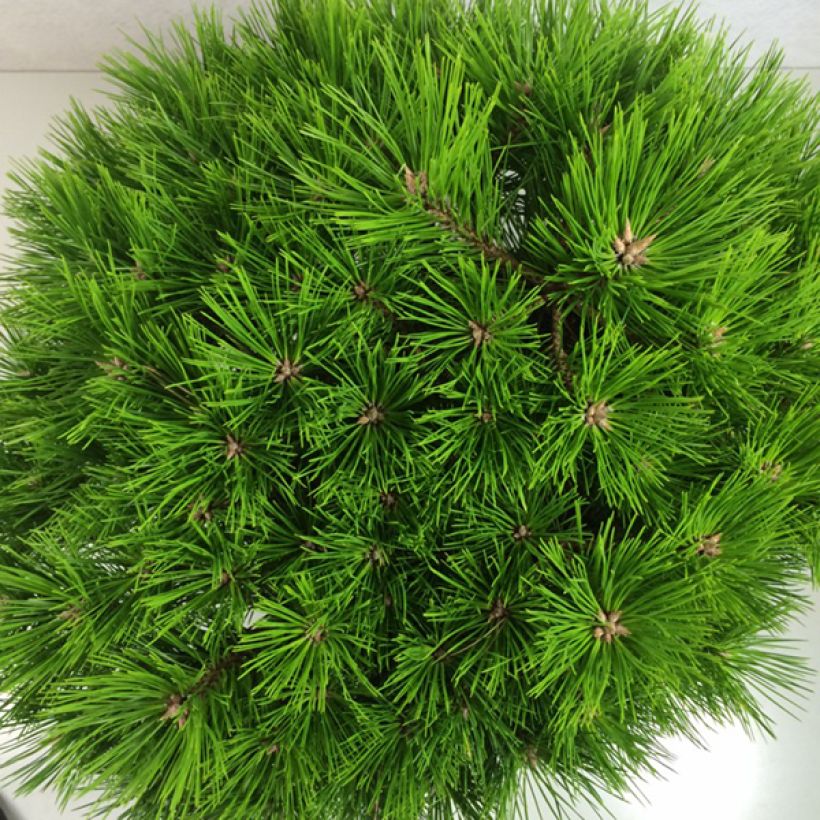

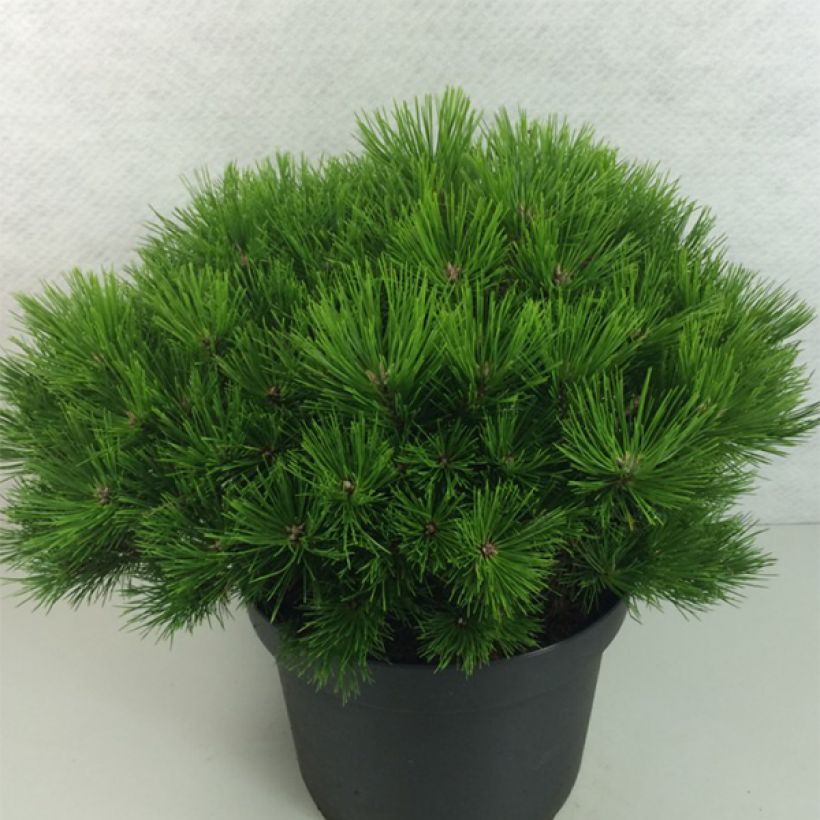

Plant habit
Foliage
Botanical data
Pinus
densiflora
Low Glow
Pinaceae
Japanese Red Pine, Red Pine
Cultivar or hybrid
Other Pinus - Pine
Planting and care
Pinus densiflora 'Low Glow' is planted from September to November and from February to June in ordinary, rather fertile, well-drained soil, but retaining some moisture. It is not picky about the type of soil, as long as it is not waterlogged. Choose a very sunny location, or shaded in the afternoon. Soak the root balls well before planting. Add organic amendment at planting and water generously in the first few years, and in case of prolonged drought. Apply a special conifer fertilizer every year in April and cultivate the soil in summer. This hardy conifer (up to -20°C (-4 °F) at least) is not afraid of wind, but it dreads prolonged drought. To maintain or enhance the habit of this bush, you can optionally do light annual pruning between May and June, by shortening the young shoots. Pruning of branches and twigs, on the other hand, should be done from September to November.
Planting period
Intended location
Care
This item has not been reviewed yet - be the first to leave a review about it.
Evergreen shrubs
Haven't found what you were looking for?
Hardiness is the lowest winter temperature a plant can endure without suffering serious damage or even dying. However, hardiness is affected by location (a sheltered area, such as a patio), protection (winter cover) and soil type (hardiness is improved by well-drained soil).

Photo Sharing Terms & Conditions
In order to encourage gardeners to interact and share their experiences, Promesse de fleurs offers various media enabling content to be uploaded onto its Site - in particular via the ‘Photo sharing’ module.
The User agrees to refrain from:
- Posting any content that is illegal, prejudicial, insulting, racist, inciteful to hatred, revisionist, contrary to public decency, that infringes on privacy or on the privacy rights of third parties, in particular the publicity rights of persons and goods, intellectual property rights, or the right to privacy.
- Submitting content on behalf of a third party;
- Impersonate the identity of a third party and/or publish any personal information about a third party;
In general, the User undertakes to refrain from any unethical behaviour.
All Content (in particular text, comments, files, images, photos, videos, creative works, etc.), which may be subject to property or intellectual property rights, image or other private rights, shall remain the property of the User, subject to the limited rights granted by the terms of the licence granted by Promesse de fleurs as stated below. Users are at liberty to publish or not to publish such Content on the Site, notably via the ‘Photo Sharing’ facility, and accept that this Content shall be made public and freely accessible, notably on the Internet.
Users further acknowledge, undertake to have ,and guarantee that they hold all necessary rights and permissions to publish such material on the Site, in particular with regard to the legislation in force pertaining to any privacy, property, intellectual property, image, or contractual rights, or rights of any other nature. By publishing such Content on the Site, Users acknowledge accepting full liability as publishers of the Content within the meaning of the law, and grant Promesse de fleurs, free of charge, an inclusive, worldwide licence for the said Content for the entire duration of its publication, including all reproduction, representation, up/downloading, displaying, performing, transmission, and storage rights.
Users also grant permission for their name to be linked to the Content and accept that this link may not always be made available.
By engaging in posting material, Users consent to their Content becoming automatically accessible on the Internet, in particular on other sites and/or blogs and/or web pages of the Promesse de fleurs site, including in particular social pages and the Promesse de fleurs catalogue.
Users may secure the removal of entrusted content free of charge by issuing a simple request via our contact form.
The flowering period indicated on our website applies to countries and regions located in USDA zone 8 (France, the United Kingdom, Ireland, the Netherlands, etc.)
It will vary according to where you live:
- In zones 9 to 10 (Italy, Spain, Greece, etc.), flowering will occur about 2 to 4 weeks earlier.
- In zones 6 to 7 (Germany, Poland, Slovenia, and lower mountainous regions), flowering will be delayed by 2 to 3 weeks.
- In zone 5 (Central Europe, Scandinavia), blooming will be delayed by 3 to 5 weeks.
In temperate climates, pruning of spring-flowering shrubs (forsythia, spireas, etc.) should be done just after flowering.
Pruning of summer-flowering shrubs (Indian Lilac, Perovskia, etc.) can be done in winter or spring.
In cold regions as well as with frost-sensitive plants, avoid pruning too early when severe frosts may still occur.
The planting period indicated on our website applies to countries and regions located in USDA zone 8 (France, United Kingdom, Ireland, Netherlands).
It will vary according to where you live:
- In Mediterranean zones (Marseille, Madrid, Milan, etc.), autumn and winter are the best planting periods.
- In continental zones (Strasbourg, Munich, Vienna, etc.), delay planting by 2 to 3 weeks in spring and bring it forward by 2 to 4 weeks in autumn.
- In mountainous regions (the Alps, Pyrenees, Carpathians, etc.), it is best to plant in late spring (May-June) or late summer (August-September).
The harvesting period indicated on our website applies to countries and regions in USDA zone 8 (France, England, Ireland, the Netherlands).
In colder areas (Scandinavia, Poland, Austria...) fruit and vegetable harvests are likely to be delayed by 3-4 weeks.
In warmer areas (Italy, Spain, Greece, etc.), harvesting will probably take place earlier, depending on weather conditions.
The sowing periods indicated on our website apply to countries and regions within USDA Zone 8 (France, UK, Ireland, Netherlands).
In colder areas (Scandinavia, Poland, Austria...), delay any outdoor sowing by 3-4 weeks, or sow under glass.
In warmer climes (Italy, Spain, Greece, etc.), bring outdoor sowing forward by a few weeks.

































